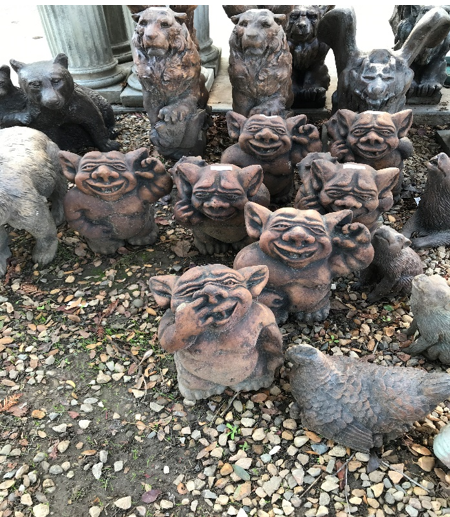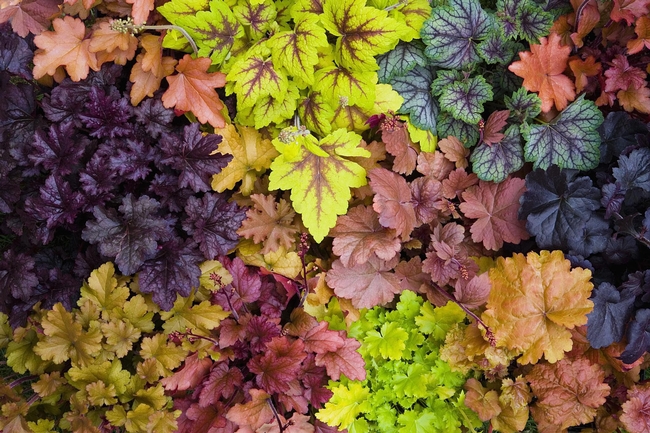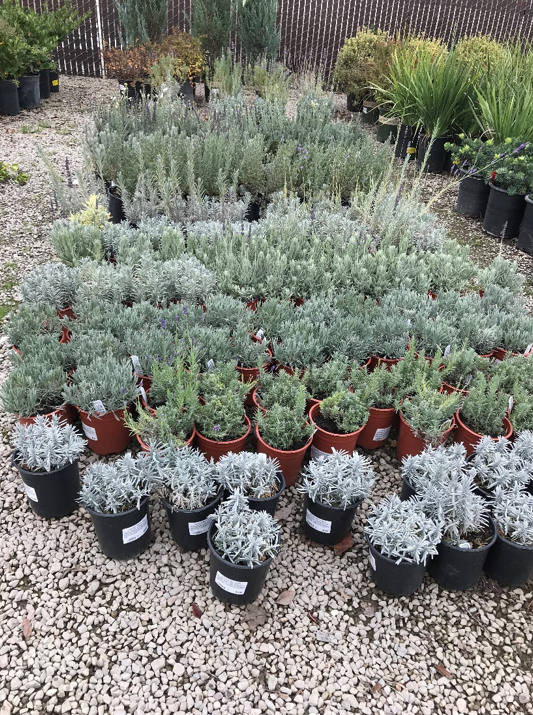- Author: Regina Brennan
The needs of the garden can easily lead to feeling overwhelmed. At one point or another, every aging gardener will feel the angst of not knowing where to begin. With each new season, there is the realization that what was managed last year may not be possible this year. To be able to continue enjoying gardening in your retirement years, there are several points to consider in making your garden landscape truly low maintenance.
The design of your garden, for example, can open up exciting challenges of redoing an old landscape that is high maintenance into a more simple and workable low maintenance environment.

Choosing low maintenance plants that will perform well in the shade or in the sun is important for any garden. A good source of information is a Master Gardeners publication: A Valley Gardener's Journal for Year-Round Blooms. More detailed information of the plants listed can be found in several Sunset publications: The Sunset Western Garden Book and 365 Days of Garden Color, among others. There are also websites that list plant collection offerings such as www.sunsetwesterngardencollection.com .
People who enjoy gardening like to share their thoughts with others and can be quite helpful in sharing information on what grows well in their own gardens and are low maintenance. Talk to your neighbors who have nice yards you admire. They might provide inspiration for reworking your garden into more low maintenance options.
A great source of information frequently overlooked is the expertise of a certified nursery professional at one of our local full service garden centers. Plan on visiting to talk about your needs and see what they recommend. New varieties are constantly being developed. It is exciting to discover a beautiful plant that is listed as easy care, well adapted to our area and our hardiness zone. The best time to visit is fall and spring which is when their inventory is the highest.
The key to getting good information and helpful recommendations is to know your own landscape. What inspires you, and what are you looking for in your garden? Whatever your inspiration, there are plants out there to meet your needs for easy care and low maintenance. Make note of the amount of sun and shade your new plant will have to live with. Another important consideration is the type of soil you have. If your garden is filled with heavy clay soil, it needs to be amended to improve drainage when planting, and side dressed with compost annually.
Low maintenance plants do not have to be boring. Interesting leaf foliage and colorful blooms for long periods are sure to provide joy for every gardener and visitor to the garden. Growing low maintenance plants in the shade requires a little more planning than what is necessary for those that like sun. Determine what shade conditions exist:
Light shade is an area that gets 3 to 4 hours of shade per day. A large number of sun-loving plants can tolerate this level of shade.
Medium shade is an area in shade for 4 to 6 hours per day.
Full shade is an area totally shaded all day with no direct sunlight, but some indirect light.
Dense shade is the deepest shade and has no direct sun and very little indirect light. This area will be difficult for
Not all plants listed as being shade tolerant are low maintenance. Avoid plants that need deadheading and ones that spread by underground roots. They may thrive and look good, but eventually they require extensive digging out in order to keep them from becoming invasive. For our area, some popular proven shade performers are:
- (Coral Bells, alum root) does well with afternoon shade. Compact and mounding. Evergreen plants prized for their foliage, can also present in an array of colors.
- Helleborus (Hellebore) can thrive in either full or partial shade. They are distinctive, long lived plants that add color for several months in winter and spring. They are also appreciated for their attractive, leathery foliage. Compact varieties are available.
- Hosta (Plantain Lily) does well in partial or full shade. There are many hundreds of hybrids available. To get new varieties, it is recommended that you order from a reputable mail-order specialist.
- Mahonia aquifolium (Oregon Grape) “compacta” grows to 2-3 ft. high. Can take any exposure but performs best with shade in hottest climates. Also comes in taller varieties.
- Coleus (Solenostemon scutellarioides) are popular in our area because of their brilliantly colored leaves but are usually grown as an annual. They are easily cared for, but the flower spikes need to be pinched out in bud to encourage more vigorous leafy growth. Their attractiveness can justify the minimal effort to pinch the flower spikes to encourage leaf growth.
Probably heading the list of low maintenance plants that are senior friendly is the vast assortment of succulents available. Many seniors enjoy trading cuttings with each other and seeking out new varieties. There are succulents that prefer shade and others that like it hot. Selections are best made by reading plant labels, and researching in the many succulent books available.
There are many low maintenance shrubs that do well in our Mediterranean climate in full sun. Because of the large inventory, many varieties are not covered here. To make your choices less daunting, look back at the plan you have made for redoing your old landscape. Knowing ahead of time what the space limitations are at maturity, and the sun and shade present, especially during our challenging summer heat, will ensure that your choices will be wisely made. Good nursery stock is rarely cheap and no one wants to make an expensive mistake.

- Viburnum (Adoxaceae) is a popular shrub that likes full sun or partial shade. It is part of a large, diverse group of plants with fragrant flowers that attract butterflies, followed by fruit much appreciated by birds. Varieties can be either deciduous or evergreen shrubs or trees. Check with your nursery to ensure that you get the type and size that fits your garden plan.
- Mock Orange (Philadelphus) is an old standby that seems to thrive on neglect. It can perform beautifully in a shady side of the house with good drainage. The plants are generally large and vigorous, with arching branches that bloom with fragrant flowers in late spring or early summer. It can be pruned to rejuvenate growth after bloom, but is forgiving if it is ignored.
- Crape Myrtle (Lagerstroemia) is one of the most popular deciduous shrubs and trees in our hot summer weather. They have showy summer flowers and good looking bark. A good indication of their popularity is to look around town and see how they are grown: Some are pruned severely to encourage flowering, and others are left to grow naturally and look like beautiful trees requiring little maintenance.
- Lavenders (Lavandula) have been in cultivation for centuries. Check with your nursery plant labels to assure you find what you are looking for. They come in a wide choice of varieties, but you can usually count on the fragrance and color to brighten up any spot in full sun. I took a picture at a local nursery to illustrate the wide range of options. It is much easier to choose from what is available than to try to special order a variety that sounds nice in a book.
- ‘Sunshine Ligustrum' (Privet) is an evergreen requiring easy care, and giving exciting colors. And it is virtually indestructible. Full sun, for example, produces uniform shades of neon yellow. Part shade, on the other hand, leads to a show stealing multi-colored appearance. It grows to 4 to 6 ft. tall, 3-4 feet wide. Sounds appealing, doesn't it? Before choosing this shrub, check out the disadvantages of planting a privet: Seeds are abundant and a favorite of birds. Fallen seeds and those dropped by birds sprout profusely in groundcovers and lawns and need pulling. It appears that a plant can be easy care up front and yet cause an abundance of high maintenance upkeep at the end. Always read labels and check out things like ease of reseeding, and if it has “greedy roots.” In certain parts of large yards, this poses no problem, but planted near driveways, flower beds and lawns, your low maintenance plant may become the next to be dug up and out.
The list of low maintenance shrubs for our central valley, with its Mediterranean climate, is extensive. I encourage readers to make an informational drive to your local garden centers and talk to the plant pros to help you choose the perfect low maintenance plants that are right for your landscape. I can't think of a more fun way to spend a morning or afternoon. Remember, retirees can shop in the middle of the week and save the crowded weekends for working people. Enjoy the extra individualized treatment!


